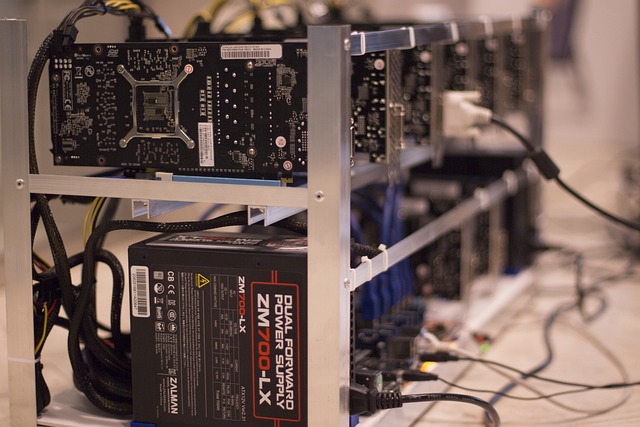Understanding smart contract defaults is crucial for investors exploring blockchain technology's investment potential. Risks include financial losses from code bugs, market volatility, or malicious activities. To mitigate these risks, investors should scrutinize smart contract code, consider decentralized governance, and implement security measures. Default-resilient protocols designed to enhance security and safeguard investments are transforming the financial sector. Navigating default risk through transparency, diversification, and due diligence is essential for navigating blockchain's complex landscape and securing smart contracts investment opportunities.
Discover the intricate world of defaults within smart contracts, where a seemingly minor glitch can trigger significant losses. This article unravels the risks and implications, shedding light on the evolving landscape of blockchain investments. We explore promising strategies and protocols designed to fortify against default events, opening doors to lucrative smart contracts investment opportunities. Learn how navigators of this digital realm are reshaping the future, ensuring resilience amidst the ever-changing blockchain horizon.
- Understanding Default in Smart Contracts: Risks and Implications
- Exploring Investment Opportunities: The Rise of Default-Resilient Protocols
- Navigating the Future: Strategies for Mitigating Default Risk in Blockchain Investments
Understanding Default in Smart Contracts: Risks and Implications

Understanding default in smart contracts is crucial for investors exploring blockchain technology’s investment opportunities. A default occurs when a party fails to fulfill their obligations as outlined in the contract, and this concept can have significant implications within the automated and decentralized nature of smart contracts. Unlike traditional agreements, where defaults may be relatively straightforward to enforce, smart contracts execute code that automatically triggers actions based on predefined conditions, making default resolutions more complex.
The risks associated with smart contract defaults are multi-faceted. They involve potential financial losses for investors due to bugs in the code, unexpected outcomes from market volatility, or even malicious actors manipulating the contract. As blockchain technology continues to evolve and gain traction, ensuring robust risk management strategies is essential to navigate these complexities. Investors must carefully review smart contracts’ underlying code, consider decentralized governance models, and implement security measures to mitigate default risks, ultimately fostering a more secure and trustworthy investment environment in this innovative sector.
Exploring Investment Opportunities: The Rise of Default-Resilient Protocols

In the dynamic landscape of finance, exploring new avenues for investment has become a game-changer, especially with the advent of blockchain technology. One intriguing area gaining traction is the concept of default-resilient protocols within smart contracts. These innovative systems offer a fresh perspective on mitigating risk and enhancing stability in various financial sectors. By leveraging decentralized ledgers and automated contract mechanisms, investors can now access promising opportunities while ensuring better protection against potential defaults.
The rise of default-resilient protocols opens up a world of possibilities for smart contracts investment opportunities. These protocols are designed to create robust frameworks that enable secure lending, borrowing, and other financial interactions. Through intelligent risk management strategies, they strive to minimize the impact of unexpected events, such as borrower defaults. As a result, investors can navigate the market with increased confidence, knowing that their investments are backed by cutting-edge technology aimed at preserving capital and fostering sustainable growth.
Navigating the Future: Strategies for Mitigating Default Risk in Blockchain Investments

In the evolving landscape of blockchain technology, navigating the future of default risk is paramount for investors exploring smart contracts and investment opportunities. As this decentralized system continues to disrupt traditional financial models, understanding and mitigating potential default scenarios are essential. One key strategy involves enhancing transparency through improved data visibility, allowing investors to thoroughly assess the underlying assets and smart contract code. By scrutinizing these elements, investors can better predict and manage risks associated with default events.
Additionally, diversifying investments across various blockchain projects and use cases can act as a buffer against default risk. This approach leverages the unique characteristics of different blockchains and applications, ensuring that even if one investment suffers a default, others may remain intact. Embracing this diversified strategy, coupled with rigorous due diligence, enables investors to navigate the complexities of blockchain investments with greater confidence and resilience in the face of potential defaults.
In light of the risks associated with default in smart contracts, the rising popularity of default-resilient protocols presents a promising avenue for investors. As the blockchain space evolves, understanding and mitigating default risk are key to navigating successful investments. By adopting innovative strategies outlined in this article, investors can capitalize on emerging opportunities while ensuring resilience against potential smart contract failures. The future of secure and profitable smart contracts investment opportunities lies in recognizing and embracing these new protocols.
